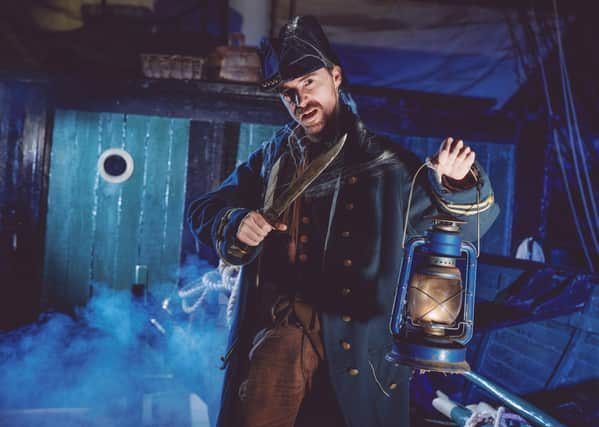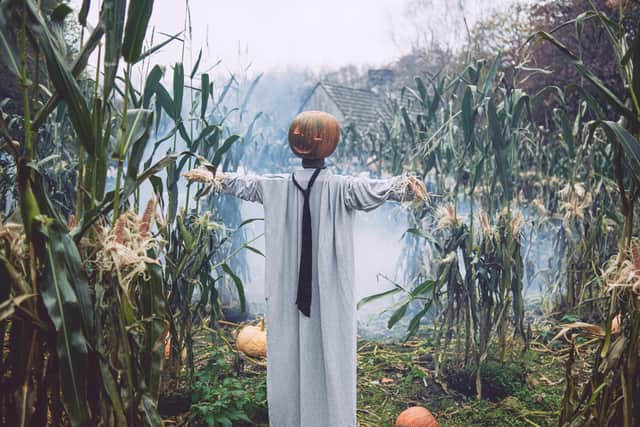This Halloween why not explore the myth and origins of Jack O’ Lantern


Throughout the mists of time, many Celtic cultures have carved vegetables to scare unsuspecting travellers on October 31st, when the veil between this world and the next was historically believed to be at its thinnest.
The origins of Halloween itself lie in the Celtic festival of Samhain (pronounced sow-an) which, along with the Celtic festivals of Imbloc, Beltane and Lughnasa, falls between the normal solar festivals.
Advertisement
Advertisement
The term ‘Jack-o’-the-lantern’ originally referred to the flickering marsh lights called ignis fatuus (or “foolish fire”) a natural phenomenon known as a will-o’-the-wisp in English folklore.


Occasionally seen at night, the lights are said to resemble a flickering lamp that misleads travellers, receding upon approach and drawing them away from safe paths across treacherous bogland.
It is said that the lights have even lured some solitary travellers to their deaths.
Liam says: “In Ireland the ‘Jack-o’-the-lantern’ has, for centuries, been associated with the cautionary tale of “Stingy Jack”, a blacksmith who tricked the devil into paying for his drinks.
Advertisement
Advertisement
“Legend has it that when that Jack died, he was unable to enter heaven or hell, so the devil mockingly threw him a burning ember to light his way.
Jack carved out one of his turnips, placed the ember inside it and began endlessly roaming the earth, becoming known as ‘Jack of the Lantern’, or ‘Jack-o’-the-lantern’.
“Folklore held that this was the cause of the ignis fatuus over the bogs.
“The story was printed in the Dublin Penny Journal in 1835 having been well known long before that.”
Advertisement
Advertisement
Originally carved from turnips or beets, Jack O’ Lanterns are said to represent either spirits or supernatural beings and are traditionally used to ward off evil spirits.
When large numbers of Irish and Scottish emigrants arrived in America in the early 1800s, they brought their Halloween traditions, including the carving of a turnip as the Jack O’ Lantern.
Over time, this custom merged with the established Thanksgiving tradition of using carved pumpkins, a fruit native to America, as a table decoration, and the Jack O’ Lantern evolved from a turnip into a pumpkin.
Initially grown by the Native Americans, pumpkins formed part of the original Thanksgiving feast and were used to make America’s first Jack O’ Lanterns.
Advertisement
Advertisement
Far from its fearsome origins, the Jack O’ Lantern has come to symbolise Halloween, and the iconic gourd now represents a welcoming sense of community.
Millions of pumpkins are grown in the UK every year, over 90% of which become Jack O’ Lanterns.
Typically, the top of the pumpkin is cut off to form a lid, the flesh is scooped from the inside and a face is carved out of the rind, so that the hollow interior can be seen.
Traditionally, a flame, candle or tealight is then placed inside before the lid is closed.
Advertisement
Advertisement
Jack O’ Lantern festivals take place all over the world, from the Hudson Valley, New York, to Omagh’s Ulster American Folk Park.
Some of the biggest events see Halloween aficionados gather to carve thousands of pumpkins that form incredible displays.
The Jack O’ Lantern Halloween Festival will take place at Ulster American Folk Park from Saturday, 23 October to Sunday, 31 October.
The event will offer family fun with creepy characters, fortune telling, seasonal games, food tasting and the opportunity to create a pumpkin Halloween design at home.
Advanced booking is recommended at: www.nmni.com